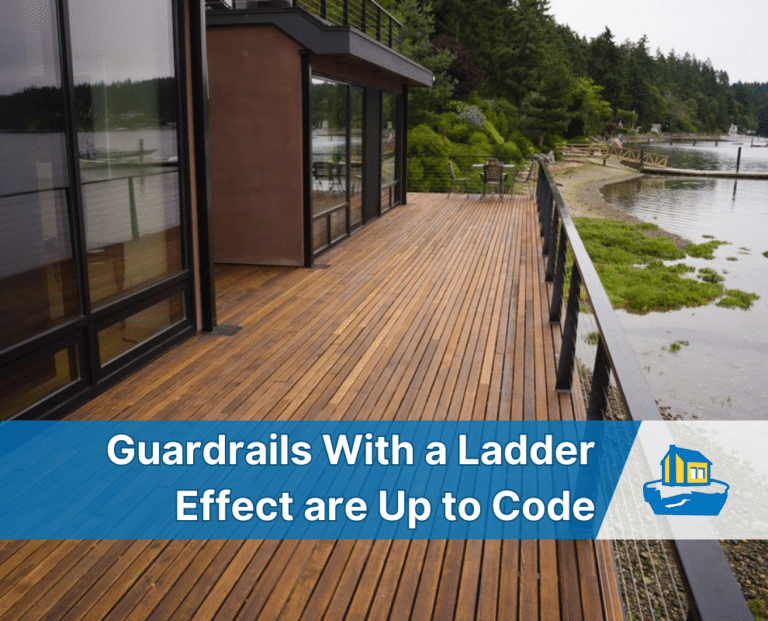4.9 1890+ Google Reviews

The worst thing that can happen during a home inspection is that the home inspector misses something. The second worst thing that happens is when home inspectors report issues that are not issues. That brings us to the ladder effect. Don’t want to read the rest of the article? Guardrails with a ladder effect are “up to code”, and not a defect. I have no idea why home inspectors continue to write them up. I do know where it started though.
The ladder effect is simply when a guardrail has horizontal rails, horizontal cables, or an ornamental pattern, that creates a “ladder”. The supposed theory is that a ladder effect is dangerous for young children who may climb the guardrail and fall over.
I mostly see this on deck railings with modern deck designs, and modern stair guards with cable railings.

The 2000 edition of the International Residential Code was the first and only time the ladder effect was prohibited. It stated:
R316.2 Guard opening limitations. Required guards on open sides of stairways, raised floor areas, balconies, and porches shall have intermediate rails or ornamental closures that do not allow passage of a sphere 4-in (102mm) in diameter. Required guards shall not be constructed with horizontal rails or other ornamental pattern that results in a ladder effect.
This was quickly removed in the 2001 edition (one code cycle) and never returned in any subsequent editions. Building codes are always changing, as more information and research is provided. The International Code Council performed extensive research and found there was no evidence that climbable guards posed any additional risk to small children.
This code requirement was removed over 20 years ago and yet home inspectors still write these up as safety issues.
In 2007, the National Association of Home Builders (NAHB) commissioned a peer reviewed report titled “REVIEW OF FALL SAFETY OF CHILDREN BETWEEN THE AGES OF 18 MONTHS AND 4 YEARS IN RELATION TO GUARDS AND CLIMBING IN THE BUILT ENVIRONMENT“. It’s 175 pages written and reviewed by Doctors and Engineers with credentials miles long.
This report officially put the issue to rest. Horizontal members of a guard rail are not a child hazard.
Too many home inspectors recommend correction of horizontal balusters. Horizontal balusters and railings are “up to code”, and not a defect.

Roof Replacement Cost Calculator
What is Roof Flashing? – Code, Purpose, and Types
Year 11 of your “20 Year Roof”
Can a Roof Have Two Layers of Shingles?
Rafters VS Roof Trusses: Complete Structural Guide
Top 5 Roofing Materials in Virginia